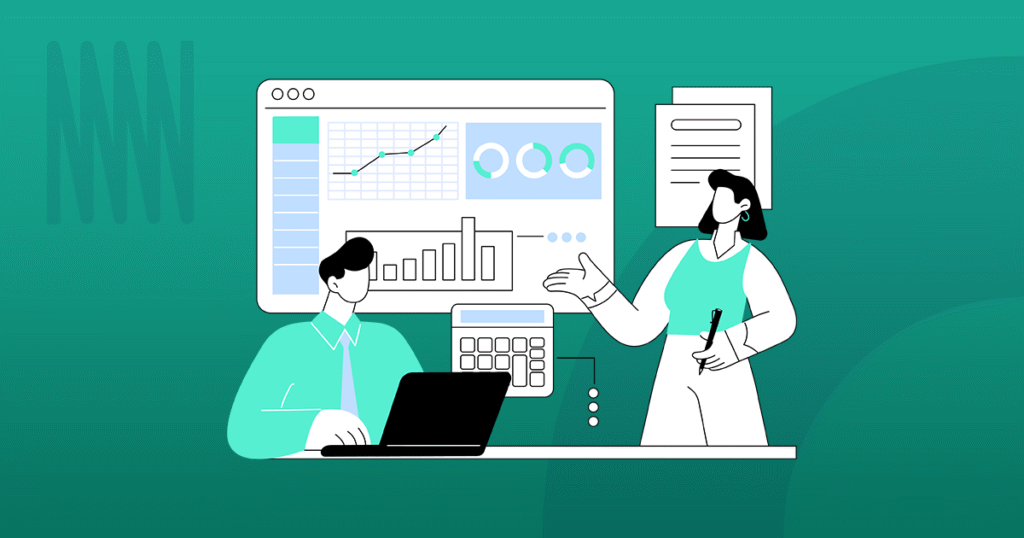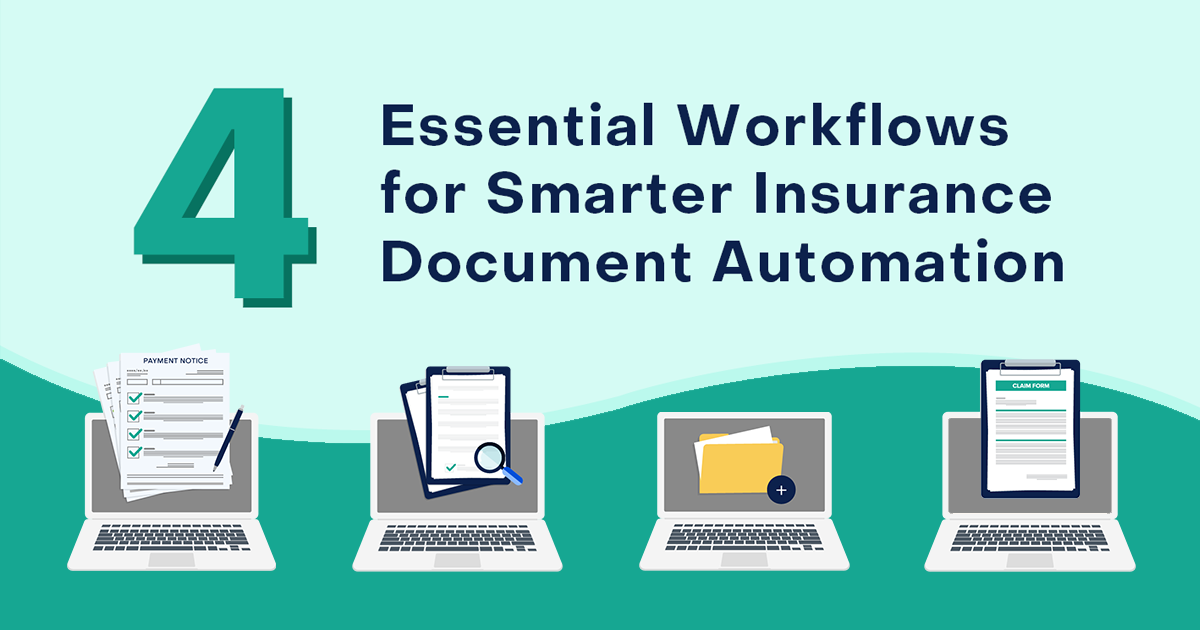Healthcare document automation isn’t just a nice-to-have. It’s the difference between earning patient trust—or losing it for good. Every manual touchpoint, every outdated form, every “we’ll get back to you” delay chips away at your credibility.
Here’s the kicker: most health insurers already have automation tools. What they don’t have is adoption. What they don’t have is speed. What they don’t have is trust.
A recent Forrester report found that only 56% of consumers believe their health insurance company will act in their best interest. That’s not just a statistic—it’s a trust crisis.
The good news? It doesn’t have to stay this way. By rethinking your document automation strategy, your organization can start winning back patient trust—at scale. The question is: how?
Let’s break it down
The Paperwork Problem No One Talks About
The healthcare industry is drowning in paperwork.
This is especially true for insurance providers. There are thousands of policies to issue, explanations of benefits to send, claims to assess, approvals to give—every single day.
It takes time to create, distribute, and/or assess these documents, which is one reason for the rising cost of healthcare in the United States and European countries.
Legacy CCMs like Quadient and OpenText compound this problem. These tools require extensive IT involvement, slowing down paperwork-heavy processes. The result? It takes WAY too long for insurers to answer coverage-related questions, approve payments, etc.
This problem births another. Insurers who use legacy CCM systems often deal with outdated document flows because IT doesn’t have time to improve them. Because of this, patients must answer the same questions repeatedly when they interact with their insurance provider.
This makes patients feel like their insurance provider doesn’t understand them and their unique health situation, which leads to both frustration and mistrust.
You check the calendar. It’s been a month since you made the IT request. In that time, your organization has lost multiple customers, who had to wait weeks for claims processing. But you can’t fix this problem until IT updates your automated document workflows. Talk about a rock and a hard place. The truth is, if your CCM requires advanced technical skills, you won’t meet customers’ expectations. Fortunately, there’s an easy way to modernize healthcare paperwork and improve efficiency. Invest in a cutting-edge document automation management tool. Why? They’re user-friendly, so anyone can create new document flows. This will increase company efficiency, allowing your team to service customers faster.
What “Modern” Document Automation Really Means (And Why It Matters Now)
“The processing of claims is painfully slow. How do you optimize this process? You need a way to change your document flows in less time—preferrably without IT. ” – Erwin Buggenhout, a Product Manager at Experlogix
Legacy CCMs aren’t equipped to handle healthcare’s paperwork problem.
So, you might be wondering, “Is there a better tool for my health insurance company?” The answer is yes. You should invest in a modern document automation platform.
Modern document automation tools are low-code or no-code. This allows everyday employees like CRM admins, to create, test, and update automated document flows.
Your company will process documents faster when it doesn’t need IT professionals to tackle these tasks. This level of speed will go a long way to building trust with patients.
Here are a few other features a modern document automation platform will have:
- Centralized Templates: Modern document automation tools allow users to store all automation templates in a central repository. This makes it easy to find templates and either update them or use them as a starting point for a new document flow.
- Built-In Compliance: You don’t need me to tell you the healthcare industry is heavily regulated. Or that compliance-related issues can lead to giant fees. Modern document automation tools support compliance by allowing everyday users to update document flows. When this happens, it’s much easier to comply with changing regulations in the proper amount of time. Also, private data is incredibly secure, which helps insurers comply with HIPAA and similar laws. Finally, documents are produced the same way every time—without manual data entry. This improves document accuracy.
- Easily Accessible PDFs: What happens after a document is created? Modern document automation tools allow insurers to store PDFs in a searchable database. So, when patients ask policy-specific questions, for example, insurers can quickly retrieve their information and provide confident answers.
AI Hype ≠ Patient Safety: The Hidden Risk No One’s Talking About
“Healthcare companies plan to invest heavily in AI. The problem is, AI isn’t very trustworthy at the moment. Health insurers need to figure out how to incorporate AI without exposing themselves to compliance-related risks.” – Erwin Buggenhout, a Product Manager at Experlogix
AI is the future. I’m not disputing that. But…
We don’t live in the future; we live in the present. And right now, AI isn’t all it’s cracked up to be. That doesn’t mean you shouldn’t use it. You just need to be careful when you do.
There are many instances of AI gone wrong. McDonald’s ended its AI drive-thru ordering process in June 2024 because the tech couldn’t process orders. A few months prior, Air Canada paid damages when its chatbot lied about a discount. Even ChatGPT, arguably the most popular AI tool on the planet, hallucinates 37% of the time.
McDonald’s angered a few customers. Air Canada had to pay a small fee. And ChatGPT basically just shrugs its shoulders. But if your AI-powered healthcare document generation software goes haywire? The consequences will be more severe. We’re talking about significant fines. In certain cases, a customer’s life may hang in the balance.
Where does this leave you? Should you ditch AI completely? That’s not the best approach. Instead, use a modern document automation system that capitalizes on AI in safe ways.
Experlogix is a good example. Our platform’s AI helps customers design templates, trigger automated workflows, and create intake forms faster. It does NOT use AI for final output.
Put simply, Experlogix uses AI at design time rather than run time. This helps ensure accurate and predictable document processes that are totally scalable.
The Business Case for Change
A huge segment of the population distrusts health insurance providers. While multiple factors contribute to this outcome, the widespread use of legacy CCM software is a major problem.
As mentioned, legacy CCMs require IT involvement. This slows down document processes, which have a negative impact on customer experience. But not every newfangled tool with AI capabilities is worthwhile. Some use AI in unsafe ways that increase audit risk (or worse.)
What you need is a modern document automation management tool that accelerates digital change in a safe and secure way. In other words, you need a tool like Experlogix.
Anyone can use Experlogix Document Automation because of its low code design. This will allow your team to update automated document workflows quickly. Experlogix also features AI. But only to design templates, trigger workflows, and create web forms. In the end, this helps our users avoid compliance issues related to AI hallucinations.
This chart illustrates the benefits of Experlogix Document Automation over legacy CCMs:
| Feature | Traditional Document Automation | Low-Code Intelligent Document Automation |
|---|---|---|
| Speed | Slow, manual data entry | AI-powered, real-time automation |
| Error Rate | High, due to human input | Low, thanks to machine learning |
| Scalability | Limited, not cloud-native | Scales to handle complex workflows |
| Integration | Requires IT development | Plug-and-play with existing systems |
Recapture Patient Trust With the Right Automated Document Management Platform
Your health insurance organization can earn back patient trust.
How? Invest in a modern automated document management tool that can be operated by normal business users. Preferably one that capitalizes on impressive AI technology in safe ways.
Experlogix is a fantastic choice for health insurance providers. Sign up for a free demo of our product today to see it in action and decide if it’s right for your healthcare document automation needs.
Healthcare Document Automation FAQs
What is healthcare document management software?
Healthcare document management software helps industry professionals handle documents efficiently. Said documents often include patient onboarding forms, test results, insurance policies, and invoices shared between providers and patients. With the right software, these documents can be made, sent, and stored in record time.
How does healthcare document automation improve healthcare paperwork?
Document automation helps healthcare companies handle paperwork by streamlining the creation, distribution, and storage of documents. For example, document automation tools can be used to build new documents using pre-existing templates and customer data. Said documents can then be sent to patients on autopilot and stored in a company database. At the end of the day, a proven document automation tool will help you create healthcare documents faster and more accurately. It will also help you store the final results in a secure environment.
What are the risks of legacy CCM software in healthcare?
Legacy CCMs are complicated tools. They can do amazing things, but typically require an in-house IT team or external implementation partner to set up and maintain. This fact causes friction in the document automation process. Why? Because normal, everyday users can’t design the document automations they need. Instead, they have to wait for expert help, which often takes weeks or months to receive. This is frustrating for employees and leads to poor experiences for customers who don’t receive the speedy service they expect.
Is AI safe for healthcare communications?
It depends on how the AI is implemented and used. If AI is used to design reusable templates, trigger automated document workflows, and create patient intake forms, it can significantly improve productivity in healthcare document automaiton without risk. If AI is used to generate final documents, there’s a good chance it will make mistakes, given the frequency of AI hallucinations. Because of this, we suggest a tool like Experlogix, which only uses AI for design and processing, not final output.
What’s the best way to use AI in document automation?
We suggest using AI to design document templates, trigger automated document workflows, and design web forms. AI can streamline these tasks, leading to major efficiency gains. We don’t NOT suggest using AI to generate final documents unless they’re proofread by a human with specific industry knowledge. This is because AI often hallucinates, i.e. makes up information, which can have terrible consequences in industries like healthcare.
What is CCM software and how does it work in healthcare?
Customer communications management (CCM) software helps customers connect with customers and improve buying experiences. Healthcare organizations use CCM software to generate documents, maintain compliance, and send personalized messages at scale. As such, it’s an important tool in the healthcare tech stack.
How do you ensure HIPAA-compliant document automation?
To ensure HIPAA-compliance document automation, purchase a tool that offers secure document storage, has the ability to track audit trails, encrypts personal data during transit, and includes access control features. Also, create company policies that mandate the retention of patient records within your system for the proper amount of time before they’re destroyed.









